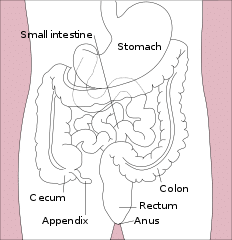Author Interviews, Gastrointestinal Disease, Parkinson's / 01.11.2018
The Appendix May Play Role in Initiation of Parkinson’s Disease
MedicalResearch.com Interview with:
Viviane Labrie, Ph.D.
Assistant Professor
Center for Neurodegenerative Science
Van Andel Research Institute
Grand Rapids, Michigan
MedicalResearch.com: What is the background for this study?
Response: Our lab has an interest in the early events and initiation of neurodegenerative diseases. Parkinson’s disease for a long time was thought to be a movement disorder driven by the destruction of dopamine neurons in a specific area of the brain, the substantia nigra. In the last 10 years it has become evident that Parkinson’s disease is not just a movement disorder but hosts a whole range of non-motor systems. One of the most common non-motor symptoms in Parkinson’s patients is issues with the gastrointestinal (GI) tract. GI symptoms often occur early in Parkinson’s disease; for many patients, GI symptoms precede the onset of motor symptoms by as many as 2 decades. Moreover, the GI is not only involved in the early signs of Parkinson’s but has been proposed to be a place in the body where Parkinson’s disease begins.
The hallmark pathology of Parkinson’s disease in the brain is Lewy bodies, which contains a clumped form of a protein called alpha-synuclein. There is evidence that Parkinson’s disease pathology, this clumped alpha-synuclein protein, is detectable in the GI tract, even many years before the onset of Parkinson’s motor symptoms. Clumped alpha-synuclein is also capable of traveling across nerve cells. There is evidence that clumped alpha-synuclein can travel up the nerve that connects the GI tract to the brain and enter the brain. This could be disastrous because clumped alpha-synuclein can seed and spread in the brain, which has neurotoxic effects and can eventually lead to Parkinson’s disease. In fact, in the brain of Parkinson’s patients, one of the first places where alpha-synuclein clumps are detected is at the terminal where the gut nerve connects to the brain, and this pathology advances from this point to other brain areas as the disease progresses.
This intriguing connection of the GI tract to the early processes of Parkinson’s disease had us interested in trying to understand how the gut could be involved in triggering Parkinson’s. But the GI tract is a very big place, and we first asked ourselves, where should we look to better understand GI involvement in Parkinson’s disease? (more…)

